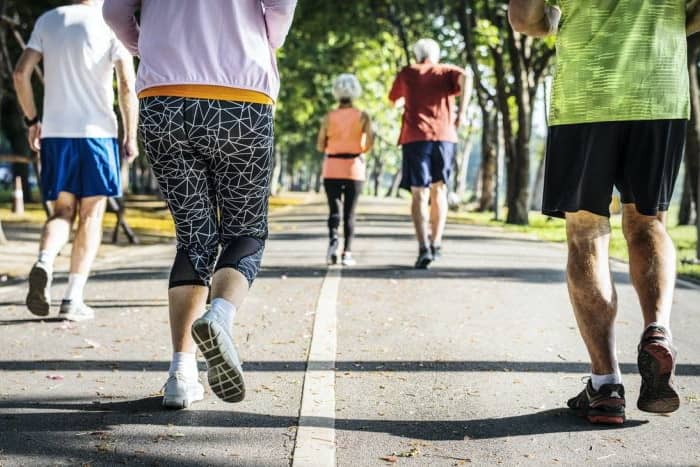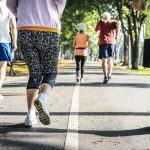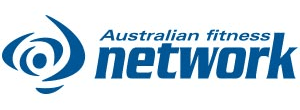Bone Strength Exercise for Osteoporosis
Osteoporosis is common in Australia. In 2017-18, 3.8% of the population were diagnosed with Osteoporosis, an estimated 924,000 Australians.
What is Osteoporosis?
Osteoporosis is a skeletal disorder characterised by compromised bone strength, leading to an increased risk of fracture.
Bone mineral density (BMD) plays a role in indicating the presence of Osteoporosis.
According to the World Health Organisation, a BMD T-score between -1.0 and -2.5 below the young adult average is classified as Osteopenia, meaning low bone mass, while a score -2.5 or more below indicates the presence of Osteoporosis.
Decreased bone mineral density occurs when bones lose minerals more quickly than the body can replace them.
Osteoporosis is most common in older women, affecting 1 in 4 women aged over 75.
Common Risk Factors
- Sedentary lifestyle
- Ageing resulting in reduced testosterone and oestrogen levels
- Menopause
- Previous fractures
- Excessive alcohol consumption
- Previous or current smoker
- Insufficient calcium and vitamin D intake
- Androgen-deprivation therapy treatment for prostate cancer
- Medications such as Thiazides (anti-diabetic medication) and Glucocorticoids (asthma medication)
- Chronic Kidney Disease, including those receiving dialysis treatment
Types of exercise that are Osteogenic and reduced fracture risk
As we age, we naturally lose bone due to the ageing process. Exercise that is bone building (osteogenic), is very important, as it provides stimulus to lay down a solid foundation.
The bone remodelling process takes approximately 9-12 months to occur, which means in order to see improvements in bone strength, exercise should be maintained for at least a few months.
Exercise has been scientifically proven to help in the treatment and management of Osteoporosis by slowing the decline and increasing bone strength.
There are 3 main exercise types commonly used to treat Osteoporosis:
1. Progressive Resistance Training (PRT)
PRT is the most effective strategy to improve skeletal muscle mass, size and strength, and thus should form the basis of any exercise programs designed to reduce fracture risk.
Guidelines suggest that 2 days per week, 2-3 sets of 8 repetitions of approximately 8 exercises per session should be included, targeting major muscle groups that attach around the hip and spinal regions, which are the most common sites of Osteoporosis.
2. Impact Loading
Impact Loading is a form of osteogenic exercise, consisting of movements that expose bone to load and stimulate bone growth in fast, novel and multidirectional ways.
According to guidelines, impact exercises should be completed 4-7 times per week, consist of 10-50 repetitions per day, working up to 50 repetitions split up in 5 sets.
The difficulty may be increased by varying the exercise, direction, height of different jumps or adding weighted vests.
Here are some exercise examples:
- Moderate impact activities: running, stride jumps, jump rope, side steps, highland-type dancing, jump take offs and hops
- High impact activities: landings from jumps (high vertical jumps, star jumps, tuck jumps, and drop landings.
3. Balance Training
Our senses that contribute to balance decline due to the natural ageing process, but it is possible to slow the decline in function or even improve their integration. Exercises should incorporate both static and dynamic balance that aims to reduce the risk of falling and ultimately, the risk of fracture and associated disability.
Guidelines suggest balance training should be performed 4 times per week for approximately 30 minutes before or after PRT or impact loading sessions, be challenging and preferably specific to everyday tasks you may perform.
These exercises may be progressed by reducing base of support, adding external perturbations, dual tasking and modifying surfaces.
Take a step in the right direction
Whether you’re seeking advice to prevent, treat or manage osteoporosis, an Accredited Exercise Physiologist can assist you by guiding you through an individualised, safe and evidence-based exercise program.
Get in contact and start strengthening your bones today!










